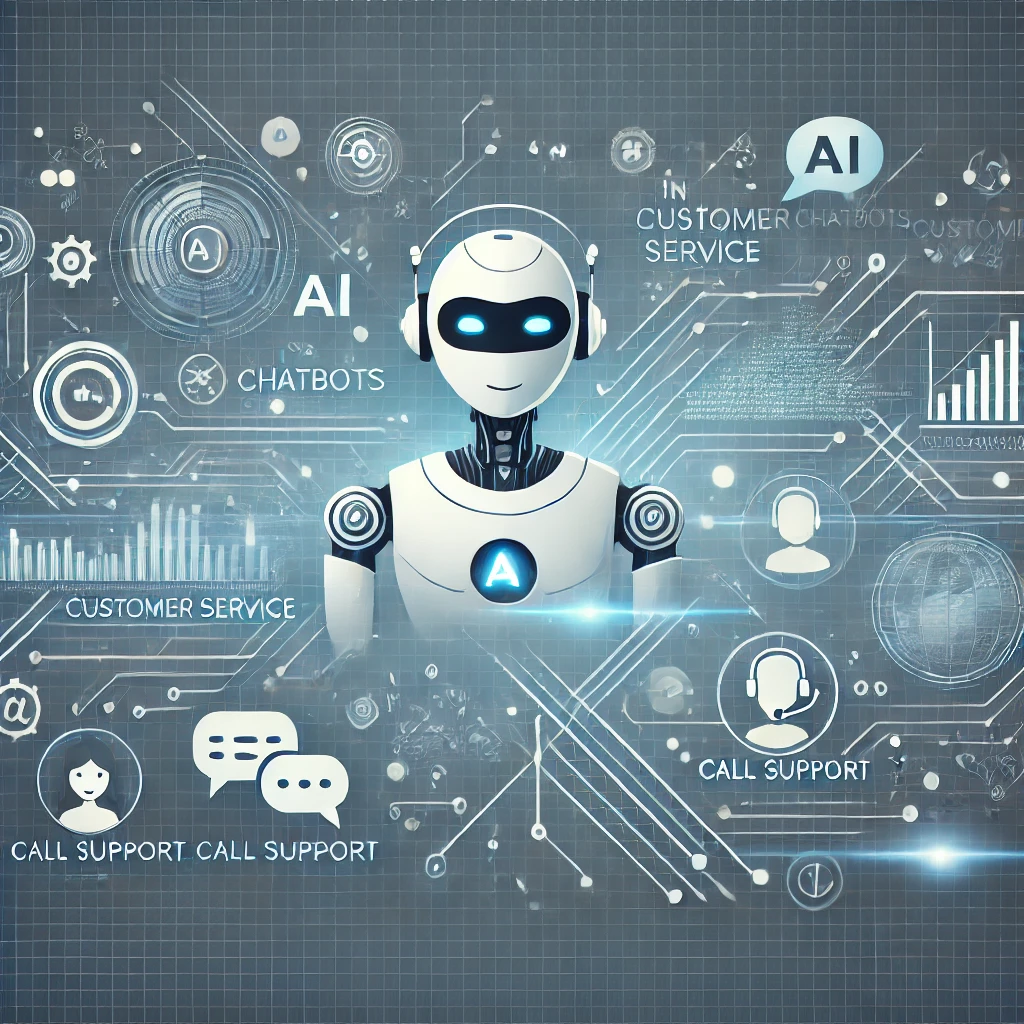
The Role of AI in Revolutionizing Customer Service: Chatbots, Virtual Assistants, and Beyond
In today’s fast-paced digital world, businesses are constantly seeking innovative solutions to improve customer service and provide seamless experiences. Enter Artificial Intelligence (AI), a game-changer that is transforming the way companies interact with their customers. From automating repetitive tasks to offering real-time assistance, AI-powered solutions like chatbots and virtual assistants are revolutionizing customer service in unprecedented ways. This blog explores how AI is driving this transformation and what the future holds for customer service.
1. The Evolution of Customer Service
Customer service has come a long way from call centers and email support. With the rise of the internet and mobile technology, customers now expect instant, personalized assistance. Businesses are under immense pressure to meet these expectations while managing costs and maintaining efficiency. Traditional methods of customer service, which rely heavily on human agents, are no longer sufficient. Enter AI, offering the scalability, efficiency, and intelligence required to meet modern demands.
2. Chatbots: The Frontline of AI-Powered Customer Service
What Are Chatbots?
Chatbots are AI-driven programs designed to simulate human-like conversations with users. Integrated into websites, messaging apps, or mobile applications, they can answer common customer queries, assist in navigating services, or even process transactions without the need for human intervention.
How Chatbots Are Transforming Customer Support
- 24/7 Availability: Chatbots ensure that customers receive instant support any time of the day, improving customer satisfaction and reducing the need for large customer service teams.
- Scalability: Unlike human agents who can only manage a limited number of requests, chatbots can handle thousands of interactions simultaneously.
- Cost Efficiency: Implementing chatbots can significantly reduce operational costs by automating routine queries and freeing up human agents for more complex issues.
- Personalization: AI-driven chatbots can analyze customer data to provide personalized responses, enhancing the overall customer experience.
Examples of Chatbots in Action
- E-commerce: Many online retailers use chatbots to assist customers with product recommendations, track orders, and manage returns.
- Banking: Banks are using AI-powered bots to answer customer inquiries about account balances, recent transactions, and even fraud detection.
- Healthcare: Chatbots help patients schedule appointments, provide medical advice, and manage prescriptions.
3. Virtual Assistants: Taking AI Customer Service to the Next Level
While chatbots handle simple queries, virtual assistants (VAs) are more sophisticated AI tools designed to perform a wider range of tasks, often with a deeper level of understanding and autonomy.
How Virtual Assistants Differ from Chatbots
- Context Awareness: Virtual assistants use natural language processing (NLP) and machine learning (ML) to understand the context of conversations, making them more capable of handling complex tasks.
- Voice Interaction: Unlike most chatbots that rely on text-based interactions, virtual assistants like Apple’s Siri, Amazon’s Alexa, and Google Assistant are voice-activated and can respond to spoken commands.
- Multifunctionality: Virtual assistants go beyond simple customer queries. They can schedule meetings, manage calendars, send emails, and even control smart home devices.
Virtual Assistants in Customer Service
Virtual assistants are revolutionizing industries by offering hands-free, on-the-go support:
- Travel Industry: Virtual assistants help travelers book flights, provide real-time updates on flight status, and assist with local recommendations once they arrive at their destination.
- Telecommunications: VAs can assist customers in troubleshooting network issues, paying bills, or upgrading services through simple voice commands.
- Retail: Virtual assistants help with product searches, in-store navigation, and personalized shopping experiences.
4. AI Beyond Chatbots and Virtual Assistants: What’s Next?
While chatbots and virtual assistants have made a significant impact, AI in customer service goes far beyond these tools. Advanced AI technologies are now being integrated into every aspect of customer interactions.
Predictive Analytics
AI-driven predictive analytics is empowering companies to anticipate customer needs and act proactively. By analyzing historical customer data, AI algorithms can predict future behaviors, such as purchasing patterns or support requests. This allows businesses to provide personalized offers, preemptively solve issues, and enhance overall customer satisfaction.
Sentiment Analysis
AI-powered sentiment analysis tools allow companies to gauge customer emotions during interactions. These tools can analyze text, voice, and facial expressions to determine if a customer is frustrated, happy, or indifferent. Businesses can then adjust their customer service approach in real-time, ensuring a more empathetic and effective response.
AI-Powered CRM Systems
Customer Relationship Management (CRM) systems integrated with AI are transforming the way businesses manage customer data. AI can analyze vast amounts of customer information, providing insights into customer behavior, preferences, and purchasing history. This enables businesses to offer hyper-personalized experiences, optimize marketing strategies, and increase customer retention.
5. The Future of AI in Customer Service
As AI technology continues to evolve, its role in customer service will only grow stronger. Here are a few trends that will shape the future of AI-driven customer service:
- Human-AI Collaboration: The future of customer service will likely involve seamless collaboration between human agents and AI systems. AI will handle routine tasks, while human agents will focus on more complex and emotionally sensitive interactions.
- AI-Powered Omnichannel Support: AI will provide consistent, integrated support across all customer touchpoints—be it social media, email, chat, or phone. Customers will receive a seamless experience regardless of how they choose to engage with a business.
- Emotionally Intelligent AI: Advances in AI will lead to emotionally intelligent virtual agents capable of detecting and responding to human emotions in real-time, creating more empathetic and effective customer interactions.
Conclusion
AI is playing a pivotal role in revolutionizing customer service by offering scalable, efficient, and personalized solutions through chatbots, virtual assistants, and beyond. As businesses continue to adopt AI-driven tools, they will be better equipped to meet the ever-evolving expectations of customers while optimizing costs and improving service quality. Whether through predictive analytics, AI-powered CRMs, or omnichannel support, the future of customer service lies in the hands of AI—ushering in a new era of customer satisfaction.
Stay ahead of the curve by embracing AI in your customer service strategy, and watch your business thrive in this new age of intelligent interaction.
